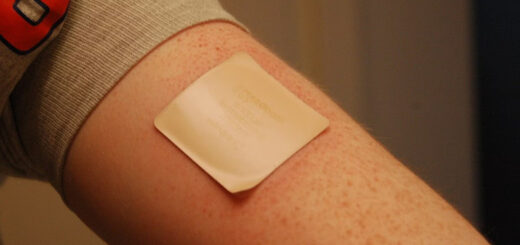CDSCO releases regulatory guidelines for sampling of drugs, cosmetics and medical devices

In an effort to simplify and rationalize the sampling process and to maintain an omni-channel database of monthly samples, in its efforts to streamline and rationalise the sampling procedure, the Central Drugs Standard Control Organisation (CDSCO) is published its final versions of regulations for the sampling of cosmetics, drugs or medical device by drug inspectors from The Central as well as State drug administrations.
The main goal of the guideline is on utilizing the available information and identified risks in the selection of the location and sample to encompass a wide range of cosmetics, drugs and medical devices that are circulating in the marketplace from manufacturing facilities wholesale outlet and retail outlets, as well as the government distribution channels and so on. in urban, suburban, and rural areas. It’s also important to keep an NSQ/Spurious drugs centralised monthly list and post it on the CDSCO website to stop the use of these drugs in future.
“The guideline will be useful for effective surveillance for quality & efficacy of drugs & cosmetics available in the market by adopting uniform drug sampling methodology for drug inspectors under drug regulatory authorities of state and central,” said the regulator for drugs.
The guidelines state that drug inspectors must create the sampling plans on a an annual and monthly basis to select samples based on identified risks, choose the sampling sites in accordance with certain criteria and complete the procedure within the timeframe set by the Central Drug Regulatory Authority.
Drug inspectors, working with the controlling authority will prepare a sampling program on a monthly basis as well as an annually, covering the whole territory or jurisdiction of their control. The sampling plan should comprise tribal and rural regions as well as drugs used in areas that are endemic to certain diseases, as well as drugs for seasonal illnesses and so on. The regulator has noticed that the areas of distribution in the interior or rural areas are not included and the drug quality at distance or in the last user is not assessed.
The annual sampling schedule will be distributed to the head office of their headquarters to ensure that it is reviewed regularly and avoid any repetition in sampling of a single brand and to include the maximum number of categories or brands within the planned sampling schedule.
The selection of a drug is contingent upon a number of aspects, that could be indicative of a greater danger to the health of the substance. The Drugs Inspectors will draw samples from various therapeutic categories, different formulations, and various manufacturers from one retail outlet using identified risks that include around 20 mentioned in the guideline like the feedback of the various stakeholders such as healthcare professionals and consumers the sampling schedule provided from the CDSCO for specific therapeutic categories of medications in particular months, the use of certain warnings about drugs issued by the CDSCO and state drug agencies for details of the frequent not of Standard Quality or spurious drugs as well as their production and sale outlets, and many more.
The Drugs Inspector will ensure that at a minimum, all of the risks mentioned above are considered in his sampling efforts over a period of six month. Additionally, no greater than 3 samples may be collected from a single outlet, and the excess sampling in the event of any reason, must be documented and approved by the authority controlling the sampling. The guideline also outlines the criteria used to choose the place of sampling.
Each drug inspector should take at least 10 samples per month, comprising nine samples of drug – the active ingredient, as well as excipients, and formulations, as well as one sample of medical devices or cosmetics.
Each drug inspector should take at least 10 samples per month, comprising nine samples of drug – the active ingredient, as well as excipients, and formulations, as well as one sample of medical devices or cosmetics.
Each drug inspector should take at least 10 samples per month, comprising nine samples of drug – the active ingredient, as well as excipients, and formulations, as well as one sample of medical devices or cosmetics.
In such instances, the sample may be divided into two equal parts, preferring with secondary or primary labels (one portion to be used by the government analysts and the other for production in the court) and the remaining two portions to allow for less testing. The data should be documented in the appropriate forms as per Drugs, Cosmetics & Medical Devices Rules and a covering letter addressed to the appropriate Government Analysts, in the event that the samples are sent for testing for testing at a lower level i.e. identification and assay only because of not being able to get the full amount and it is added.
The guideline further states that the inspector of drugs should design the sampling process in that the samples are sent to the laboratory the day after sampling, or the next day if there is delays due to transport from distant or rural locations.
The Drugs Inspector must determine the method of analysis and working standards/references from the manufacturer of samples of patent and proprietary drugs as well as new drugs, and not wait for the laboratory to communicate and will provide them to the laboratory for prompt testing of the drug. The NSQ and other spurious reports must be submitted to the CDSCO by the 10th of every month to be uploaded on its website.
Each Drug Inspector will keep information on sampling, including the quantity of samples collected and their processing completion up to the report of test as well as the quantity of NSQs that are reported by laboratories and the actions taken and cases of false substances reported by the laboratory in the report of test. The inspector must send the data to their authority controlling them on a monthly basis to enable implementation of their sampling program. The information gathered from the monthly sampling data will be used to plan the the next month’s sampling schedule.
“Each Drug Controlling office shall prepare a list on monthly basis for Wholesale/retail outlet with name of registered pharmacist and owner where spurious products are reported/ distribution chain is broken for the provided invoice. The above list shall be shared to their head office for preparation of a centralised list of wholesaler/retailer outlets revealed in sale/distribution of spurious products and to give wide publicity for the public to avoid use of purchased medicine from these outlets,” stated the guidelines.
In the past The drug regulator has observed that there isn’t a defined method for selecting samples, the location of sampling, etc. It was carried out randomly based on the knowledge of individual Drug Inspectors.
“Often it was seen that sampled drugs are from big brands and collected from urban locations or sub urban locations only. The interior locations or rural distributions are not covered and thereby quality of drugs at distant users/last user was not being assessed. Cosmetics samples were not collected in some regions. There is no centralised database of sale outlets where NSQ/spurious products were reported, such identified outlets are to be kept for regular vigilance,” the report added.
The Section 22 and 23 of the Drugs & Cosmetics Act 1940 specifies the precise method for samples to be obtained by Drugs inspectors from Central and State Drug Control as part of the routine drug quality surveillance. Drug sampling is a cost-effective job and resource limitations could limit the number of samples taken, the methods that are used to analyze or the number of Drugs Inspector & Laboratory available to perform the sampling and analysis as well. It is therefore crucial to make the most of the resources, focusing in on the parameters which pose a greater risk for patients, and to apply risk analysis when planning the sampling, as per the guidance.
It is worth noting that the 62nd session of the Drugs Consultative Committee (DCC) is calling for a unified procedure in the country to take rapid actions in relation to the distribution of information, the suspension or cancellation of a license for the sale of counterfeit products. In the course of the meeting it was agreed that all States have agreed to share information on the non of a standard good quality (NSQ) products as well as products with spurious ingredients each month, but preferably by the 10th of each month.



